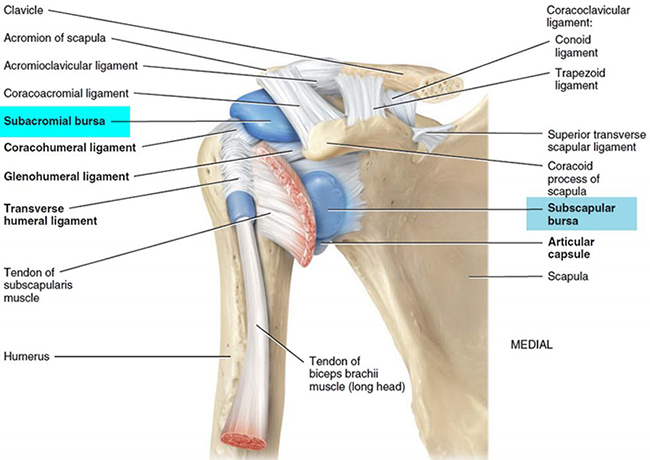Bursitis (Hip and Shoulder)
Bursitis is inflammation or irritation of a bursa sac. You have these sacs all over your body. They’re filled with fluid that helps ease rubbing and friction between tissues like bone, muscle, tendons, and skin. Bursitis is common around major joints like your shoulder, elbow, hip, or knee.

Bursitis Causes and Risk Factors
Bursitis is common in adults, especially after age 40.
It’s usually caused by repeated pressure on an area or by using a joint too much. High-risk activities include gardening, raking, carpentry, shoveling, painting, scrubbing, tennis, golf, skiing, and throwing. You can also get bursitis by sitting or standing the wrong way for a long time at work or home, or by not stretching enough before you exercise. Sudden injury can sometimes cause bursitis.
As you age, your tendons aren’t able to handle stress as well. They’re less elastic and easier to tear.
If there’s a problem with the structure of a bone or joint (such as legs that are different lengths or arthritis in a joint), that can put more stress on a bursa, causing bursitis. Reactions to medications and stress or inflammation from other conditions, such as rheumatoid arthritis, gout, psoriatic arthritis , or thyroid disorders, may also raise your risk.
An infection, especially with Staphylococcus aureus bacteria, can sometimes cause bursitis.
Bursitis Types
Bursitis might affect your:
- Elbow
- Shoulder
- Hip or thigh
- Buttocks
- Knee
- Achilles tendon or heel
Bursitis Symptoms
Pain is the most common symptom of bursitis. It might build up slowly or be sudden and severe, especially if you have calcium deposits in the area. Your joint might also be:
- Stiff
- Swollen
- Red
Call us at Melbournearthritis if:
- Fever (over 38 c degrees)
- Swelling, redness, and warmth in the area
- General illness or more than one area that hurts
- Trouble moving the joint
These could be signs of an infection or another problem that needs medical care right away.
Bursitis Treatment
- Local Steroid injection
- Photobiostimulation
- Ultrasonic wave Therapy
- Graded Excecirse guide by our senior Physiotherapist Morvarid
Bursitis Prevention
You can’t always prevent bursitis, but some steps can lower your risk.
- Use cushions or pads when you’re resting a joint on a hard surface, like if you’re kneeling or sitting.
- If you play sports, mix things up so you don’t make the same motions all the time. Warm up and stretch before you play, and always use proper form.
- Start slowly and easily when you’re trying a new exercise or sport. As you build strength, you can use more force and do the motion more often.
- Don’t sit still for a long time.
- Take breaks often when you’re making the same motions over and over again.
- Use good posture all day.
- Keep a healthy body weight.


